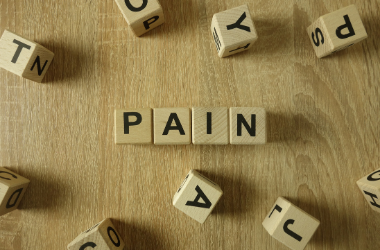Patients are often asked to rate their pain on a scale from zero to ten, zero being no pain and ten being the worst pain you’ve ever felt. For some patients, answering that question may be a bit more complicated than it seems.
The pain scales are designed to be a measure of pain severity. They are especially useful in establishing a baseline, so clinicians can see the progress of your pain over time, such as after surgery. However, people tend to experience pain differently. One patient’s 4 might be another patient’s 8. 
“That’s why I usually ask the patient to describe what the pain feels like as well as provide the number,” says Gordan Kuhar, MD, DABPM, Saratoga Hospital Medical Group – Pain Management. “I’ve treated patients who have a stoic, ‘John Wayne’ approach to pain, rating it as a one or two, but they could hardly move. I’ve also seen patients who rate their pain as a ten, but it doesn’t stop them from going to the gym. Some patients have experienced so much pain that they’ve developed a high tolerance to it, such as athletes, veterans, women who have had several children, and trauma survivors. They are more likely not to come in when they should.”
Dr. Kuhar adds that how we perceive and tolerate pain can be affected by our mood. If patients have experienced significant stress in their lives, even just before a visit, they may subconsciously rate their pain higher than when they are in a better mood. According to Dr. Kuhar, there is a decided trend among chronic pain practitioners to deemphasize the VAS pain rating given all these mitigating factors.
“I am more interested in exploring the impact one's pain has had on an individual's day-to-day,” Dr. Kuhar says. “Are you sleeping better, walking further, and socially engaging more? If a patient tells me that she and her husband used to go for long walks after dinner, but now she can barely go to the driveway and back, I’d like to help her be able to take those walks again. My goal, when asking about your pain, is to help you get back those important aspects of life that pain has made impossible.”
The pain scale is a valuable tool in many areas of medicine, Dr. Kuhar reiterates. “While I tend to deemphasize it with my chronic pain patients, it is quite useful in emergency, surgical, and other areas of care. In all cases, I recommend patients give both a pain rating number as well as a description of the pain, comparing it to pain you have previously experienced, so your physician has context and can better help you.”
For more information about using pain scales, you may find this WebMD article useful. Saratoga Hospital Medical Group – Pain Management is located at 3050 Route 50 in the Saratoga Surgery Center. Learn more about Pain Management and our other services at SaratogaHospital.org.
Monday – Friday:
8:00 AM – 5:00 PM
Extended hours, by appointment:
Monday – Friday:
7:30 AM – 8:00 AM
Thursday:
5:00 PM - 7:00 PM
518-886-5800
Fax: 518-886-5880
